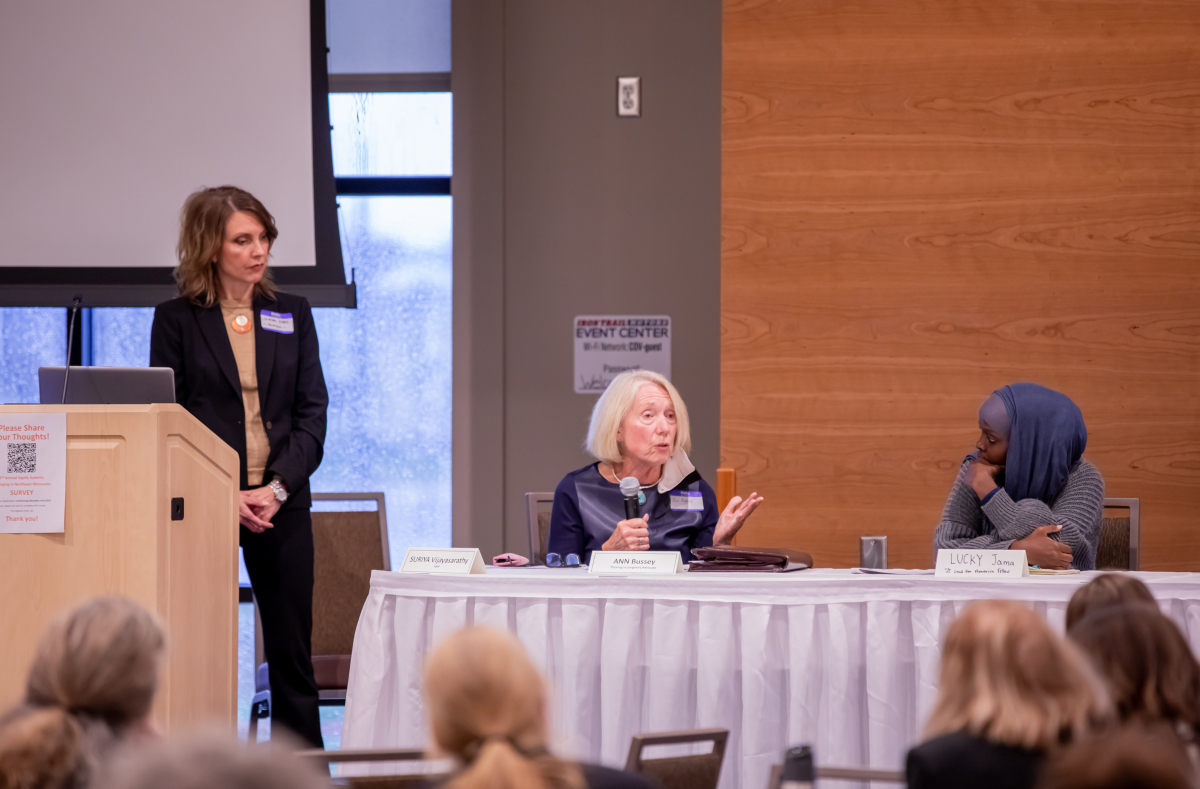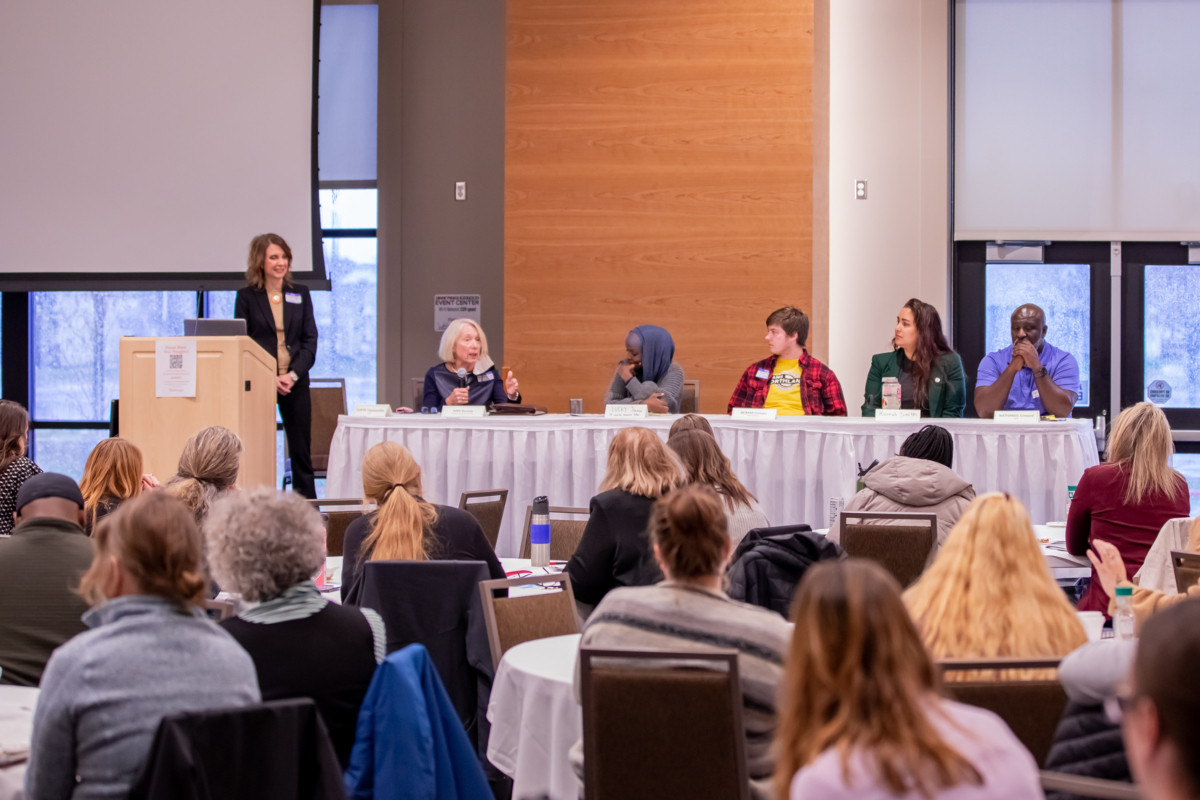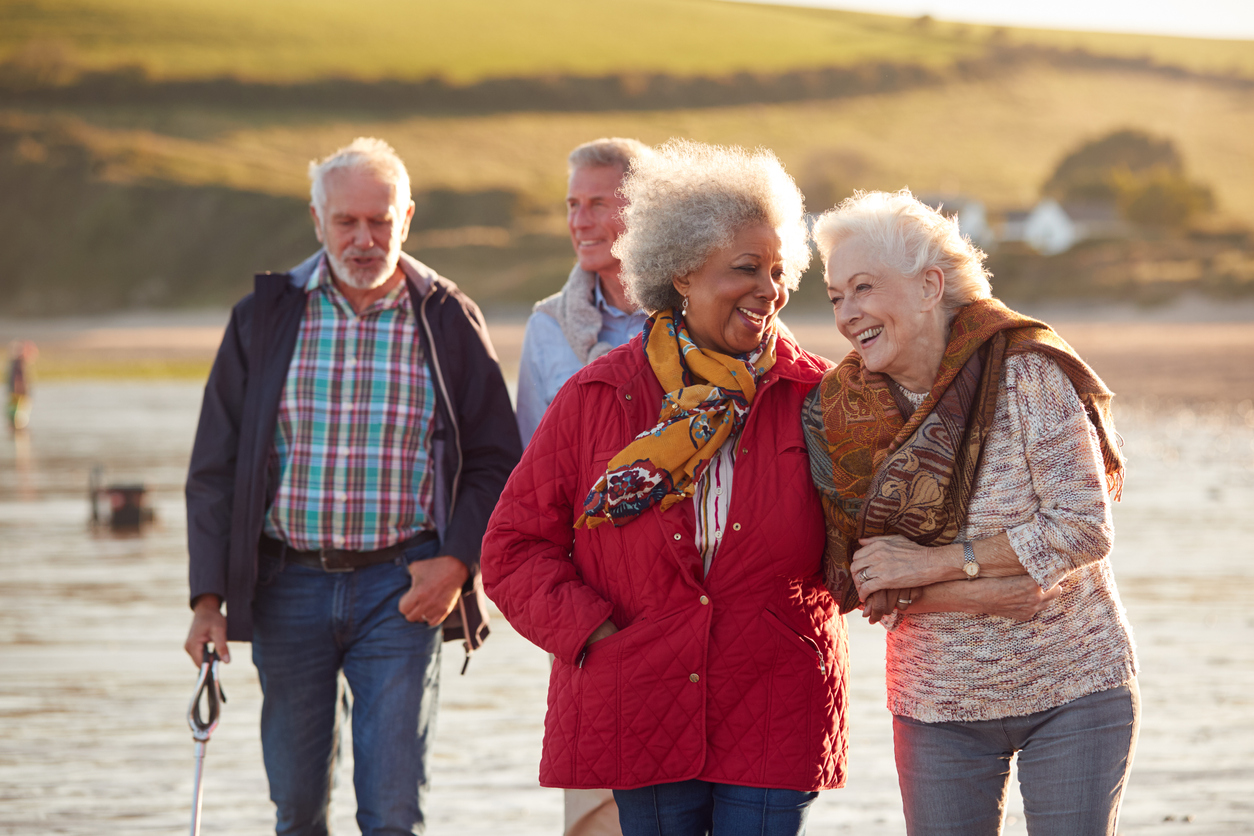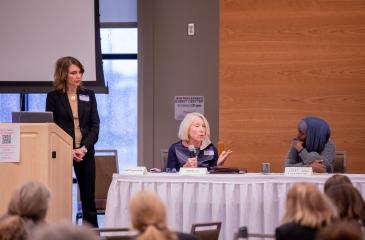At first, it seems like a perfectly ordinary exercise class. Three times a week, a group of seniors meet for an hour inside a church gym on the Iron Range, the narrow strips of land that trace ore deposits along Lake Superior. It’s hardly where you would expect to find the beating heart of a revolution.
But that’s the home base for Ann Bussey, a retired healthcare leader who is changing how Minnesota leaders and rural communities think about senior citizens. The class acts as both an informal focus group and a muse for Bussey, who has already attracted attention from the state’s highest offices and convinced the library system to expand its services to help older patrons.
Bussey is one of the inaugural fellows of Project REACH (Rural Experts Advancing Community Health), a one-year program from the Clinical and Translational Science Institute (CTSI) and the Office of Academic Clinical Affairs that trains rural leaders in health policy and leadership. If her success is any indication, the program is set to make a difference in rural communities across Minnesota and around the country.
Rural challenges
Bussey’s exercise group is a microcosm of the challenge and opportunity that drew her to Project REACH. The class is free (financed via the Medicare Advantage Plans fitness benefit offered through participating community fitness centers) and draws seniors from across the Iron Range who often show up early and stay late. But despite its low cost and large appeal, it’s been canceled twice due to lack of community gym sponsors.
It’s hard to find a place willing to host the group because policies, strategies, and funding aren’t designed to help our population of people 65 years and over to stay healthy, Bussey says.
“After 65, you get used to being invisible,” she said. “Rural areas are fighting for survival, and they’re putting their efforts into attracting young people and families to come and work. When they do think about the old people in their community, it’s about medical care or social services. They always think about what we need. They never consider what we want.”
That’s a detriment to both the rapidly expanding senior population and the rural tax base, she says. When communities put effort into keeping their elder population engaged and active, they reap sizable economic benefits. Healthy, involved seniors spend money and volunteer, making their communities more vibrant, rich, and attractive.

A focus on digital literacy
But physical exercise isn’t the only place Bussey is putting her effort. She’s also helping her 65-plus population become more digitally literate.
This is where Project REACH comes in, helping fellows like Bussey become advocates in their rural communities. Through the program, fellows identify a local challenge, build leadership and policy skills to address it, then develop a policy proposal to share with decision makers. Along the way, University of Minnesota faculty and staff provide dedicated mentorship and project support.
With support from the program, Bussey became a champion for digital inclusion and digital literacy as a way of keeping seniors connected and thriving. She pushed for expanded broadband service to Minnesota’s remote areas and advocated for a plan to turn the state’s rural libraries into IT departments that can help seniors stay connected and use technology effectively.
But to really move the needle, she had to do something else that isn’t expected from people her age. She had to go viral.

Start with the facts
Type “Aging in Minnesota Fact Sheet” into a search engine and the top hit points to a document created by Bussey that’s now housed on the Minnesota House of Representatives website. Bussey credits University of Minnesota rural health experts Carrie Henning-Smith, PhD, and Lacey Loomer, PhD — her Project REACH mentors — with helping her to develop it.
The document lays out, in cold detail, the reality of aging in Minnesota.
“If you ask someone, ‘How many people over 65 live in nursing homes?’ they will usually guess that it’s over 30 percent. But it’s less than 3 percent! And we spend nearly $8 billion on them, with 70 percent of that cost born by the public,” Bussey said. “Long-term care is an important asset to fund and protect in our communities; however, when policy, strategy and funding are discussed, it should not be our only focus. The fact is that 90 percent of older adults live independently in our communities, and we need to put effort into them as well.”
What’s more, she says, there are more people over 65 in Minnesota than there are children in K-12 classrooms. Right now, about a million people 65 years and over live in the state, a number that will have doubled from 2010 to 2030, and is forecast to be the largest older adult population ever for Minnesota between 2030 and 2050. And rural communities are aging much faster than urban centers.
Spurring action
“We needed to do this fact sheet because nobody could see the big picture of what’s happening,” Bussey said. “Even people in the healthcare community could only see their part of it. But when you lay everything out together, you realize that we need to do something to be ready for 2030.”
The fact sheet’s influence has been vast. For example, it’s been used to influence policy (including legislative endeavors like bills HF 979 and SF 1022, which advocate for creating a Minnesota Legislative Task Force on Aging) and shape strategy for rural- and senior-focused advocacy groups.
“The time to act is right now,” Bussey says. “In rural places, we have higher rates of people over 65 who are not digitally literate, and in this new world, that means we are seeing a new generation of people who are getting left behind. People in rural areas either do not have access to broadband internet or they cannot afford it. Or maybe they can’t afford a device, like a smartphone. Even if they have one, they may not know how to use it.”
Ending the digital divide
Bussey’s plan begins at the library. For decades, Minnesota’s libraries have created worthwhile community spaces for families and children. But as our life expectancy now approaches 80 years, more focus is needed on lifelong learning for people of all ages.
“Many older adults in rural areas are digitally illiterate. Personally, I know I become more digitally illiterate with every year that goes by, and that’s because I don’t have access to an IT department like I did when I was a healthcare leader.
Bussey adds, “Libraries are the perfect space to become community IT departments.”

Sparking policy change
Bussey did her homework. She discovered that the Library Services and Technology Act (LSTA) guarantees federal funding for libraries as long as certain rules are followed. One rule is that libraries must create and follow a five-year plan. That was her opportunity.
A telephone inquiry to the Minnesota State Library Services resulted in an immediate response.
“A State Library Program Specialist returned my call within the hour, indicating that no one has ever contacted them about the LSTA. The Library Program Specialist met with me regularly throughout the Project REACH curriculum, continually informing the Project REACH policy proposal. Through this liaison, I was interviewed as a community stakeholder informing the planning process for the state’s 2023–27 plan.”
She adds, “The new Minnesota State Library five-year plan now includes digital inclusion and digital literacy strategies, championing our rural 65 and up population, BIPOC communities, and people with disabilities. The stars are aligning!”
In addition, Bussey advocates for her local libraries to participate in the Digital Equity grants provided via the Minnesota Department of Employment and Economic Development (DEED), created to inform the state’s digital equity plan. The grant funding strengthens the libraries as community centers for digital equity, serving as learning centers to better understand the needs for expanding broadband internet and digital literacy for its rural communities.
So far, 165 out of the state's 355 public libraries are involved in some capacity with creating Digital Connection Committees within their communities.
"Her perspective is so wonderful and has given us some great opportunities to follow the path she’s blazing," says Tamara Lee, MLIS, Director of State Library Services and Expanded Learning Opportunities, Minnesota Department of Education. "She reminds us of how we needed to evolve to make sure senior citizens' needs are being met."

The REACH of her impact
Bussey’s work is already being felt throughout greater Minnesota, but in her mind, the work has just started.
“My focus is healthy aging, which means creating interest in policy, funding, and strategies that help communities create ways for their citizens to thrive in longevity,” she said. “I’m focusing on bettering our sense of purpose, personal agency, social engagement, connectedness, activity, and belonging—the outcomes that all aging services should strive for.”
Whether that’s working with legislators, advising advocacy groups, or calling gyms on the Iron Range to host an exercise class, she’s ready for the task. Her fellowship with Project REACH has invigorated her efforts, she said, and she has no plans to stop.
“I would be nowhere if it wasn’t for Project REACH. It gives me instant legitimacy. I’m no longer a hidden old lady. If I hit a bump in the road, there is always someone who steps up to help me. Now, people listen to me. They take me seriously. It’s been incredible,” she said. “I’m trying to change the narrative. I want people to understand that our 65-plus population is a worthwhile investment . You’re not stuck with us. We’re in this together.”

